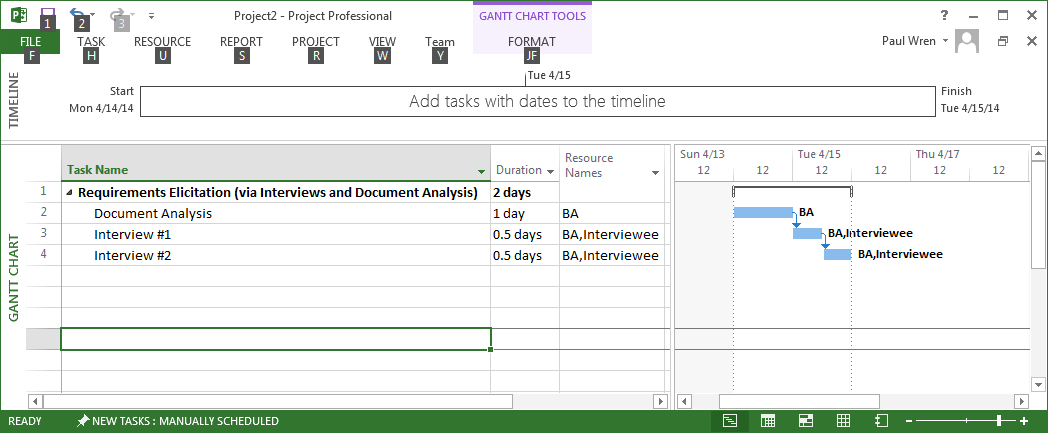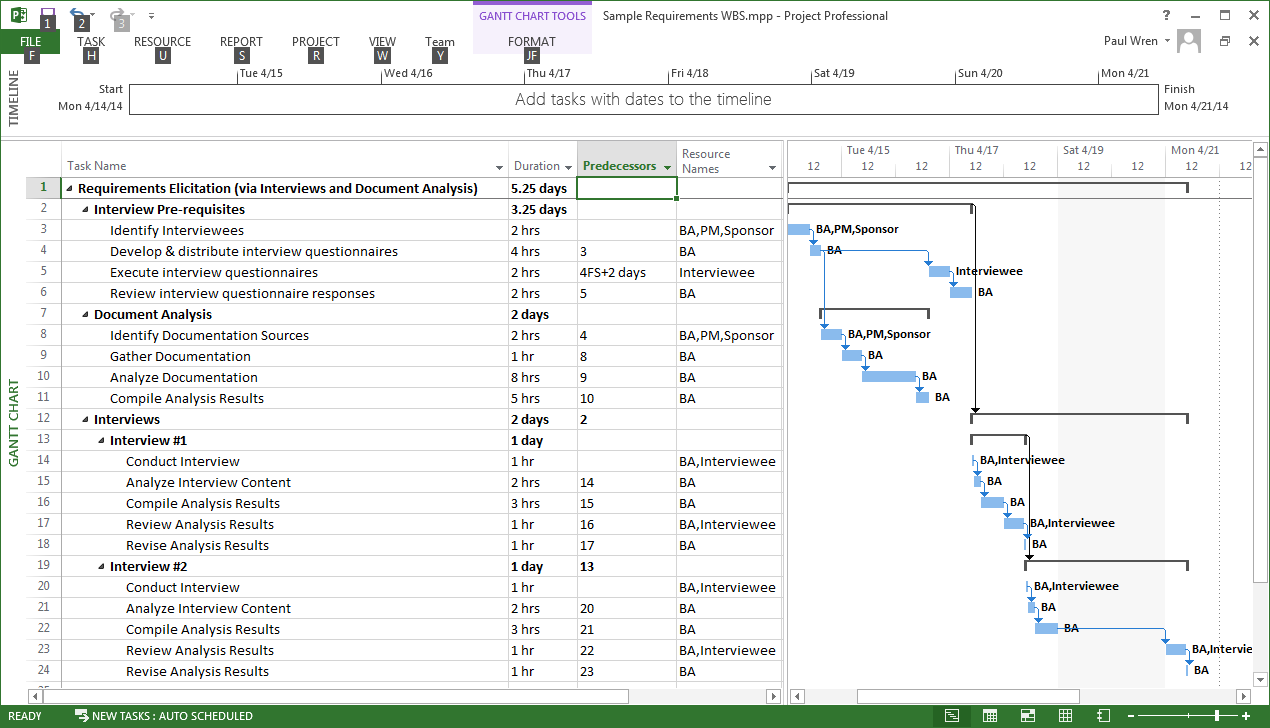
A Detailed WBS – The BA’s Best Friend
As a Business Analyst (BA) how often have you been asked to provide an estimate for a requirements elicitation and analysis effort and, upon providing it, had your estimate cut back by management in a seemingly arbitrary fashion?
I recently attended a conference for Project Managers (PMs) and BAs where this issue was brought up during a requirements planning techniques seminar. I heard stories from several of the BAs in attendance that their management would look at the estimated time and resource plans and summarily cut them by 30% while keeping the same project scope. Other managers would simply say, “that’s too much time, figure out how to do it faster.” The question raised in the seminar was “how do you deal with these situations or prevent them from happening?”
The best approach I have found is to be armed with as much objective and quantifiable information as possible to support your estimate – in other words – a detailed Work Breakdown Structure (WBS).
When developing estimates for requirements elicitation and analysis, many PMs and BAs will lay out the tasks to be executed and even include some resource assignments and dependencies, in a high-level WBS. More often than not, however, they are not very detailed and, subsequently, not very accurate. Below is an example of a basic WBS and Level of Effort estimate for a seemingly simple project involving elicitation of requirements for a system, assuming the project requires interviews with 2 groups of users and an analysis of associated existing process and system documentation.

Although the estimate seems to include all the necessary tasks, durations and dependencies, if we look at it through the lens of a Business Analyst who might be responsible for doing the actual work, we will see that the effort required becomes significantly larger.

When we factor in standard information gathering, interview preparation, requirements analysis, review and revision tasks along with their associated time frames, we see that our simple requirements analysis effort takes significantly longer than initially planned to complete. The development of this more comprehensive listing of tasks is based on a variety of inputs including:
- Analyst’s experience on past projects and associated activities
- Similar project comparisons
- Exhaustive brainstorming and analysis of all tasks required to complete the deliverables
Having a detailed WBS allows the BA to call out all the activities required and helps ensure all project members are aware of required time and resources.
Related Article: The Agile BA – Moving Beyond the Backlog
That said, just because a BA can show why they require certain requests, a certain timeline, and set of resources to complete the analysis effort, does not guarantee that those requests will be granted. There may be existing time, resource or budget constraints with which the project and requirements analysis effort must comply. In those instances, a detailed WBS can be used to evaluate objectively which activities and scope items are essential and which can possibly be omitted. This will hopefully result in an adjustment of scope, schedule or deliverable expectations.
Example: If I can only have two (2) days it means I can only get requirements from one (1) of the two groups.
If adjustments to expectations are not made, at least this exercise should result in a specific identification of risks to the requirements effort so that steps can be taken to mitigate the probability or impact of their occurrence.
Example: If I can only have three (3) days it means I can’t do a thorough document analysis, so the interviewees need to make sure they cover all possible processes and requirements.
By developing a detailed WBS for any analysis effort, a BA can help ensure that deliverable expectations are understood and agreed to by all project participants and that adequate time and resources are available to complete the process effectively.
BABOK Notes
The process of estimating tasks and durations for requirements elicitation described above are covered in detail in the Business Analysis Planning section of the Business Analysis Body of Knowledge (BABOK) published by the International Institute of Business Analysis (IIBA). A link to the BABOK on the IIBA website is provided below:
http://www.iiba.org/babok-guide.aspx
where to shop for Cocaine In Atlanta usa
… [Trackback]
[…] Read More on to that Topic: batimes.com/articles/a-detailed-wbs-the-ba-s-best-friend/ […]